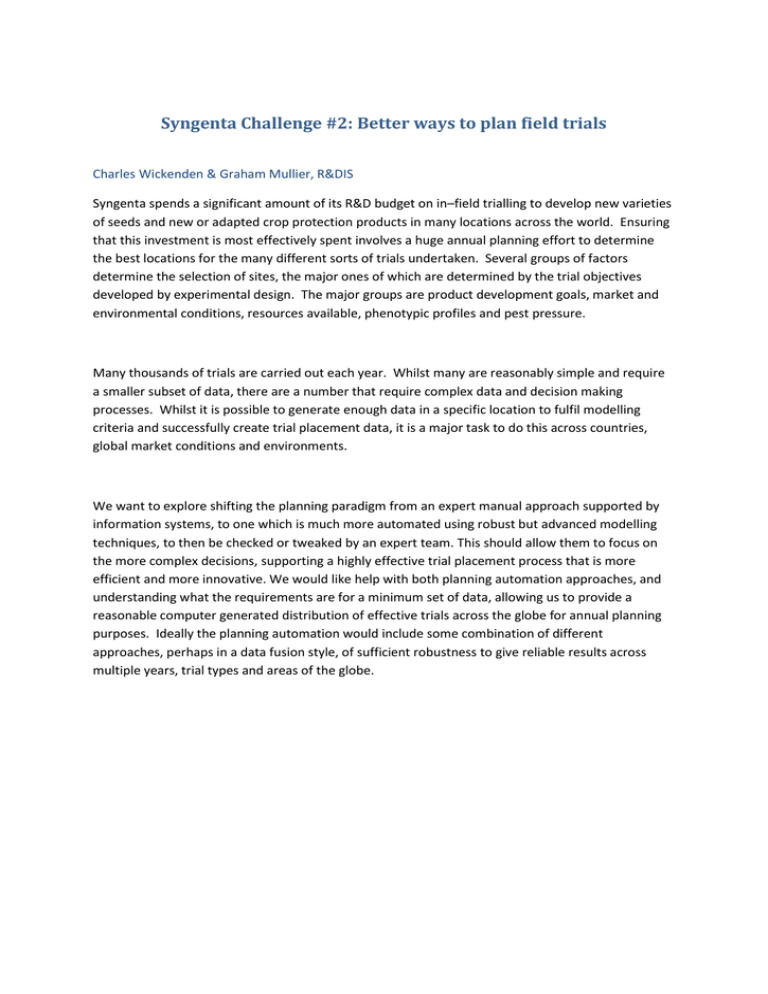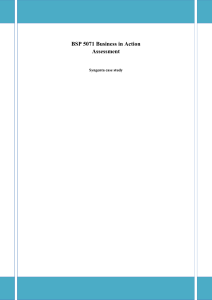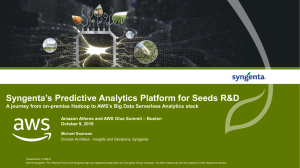Syngenta Challenge #2: Better ways to plan field trials
advertisement

Syngenta Challenge #2: Better ways to plan field trials Charles Wickenden & Graham Mullier, R&DIS Syngenta spends a significant amount of its R&D budget on in–field trialling to develop new varieties of seeds and new or adapted crop protection products in many locations across the world. Ensuring that this investment is most effectively spent involves a huge annual planning effort to determine the best locations for the many different sorts of trials undertaken. Several groups of factors determine the selection of sites, the major ones of which are determined by the trial objectives developed by experimental design. The major groups are product development goals, market and environmental conditions, resources available, phenotypic profiles and pest pressure. Many thousands of trials are carried out each year. Whilst many are reasonably simple and require a smaller subset of data, there are a number that require complex data and decision making processes. Whilst it is possible to generate enough data in a specific location to fulfil modelling criteria and successfully create trial placement data, it is a major task to do this across countries, global market conditions and environments. We want to explore shifting the planning paradigm from an expert manual approach supported by information systems, to one which is much more automated using robust but advanced modelling techniques, to then be checked or tweaked by an expert team. This should allow them to focus on the more complex decisions, supporting a highly effective trial placement process that is more efficient and more innovative. We would like help with both planning automation approaches, and understanding what the requirements are for a minimum set of data, allowing us to provide a reasonable computer generated distribution of effective trials across the globe for annual planning purposes. Ideally the planning automation would include some combination of different approaches, perhaps in a data fusion style, of sufficient robustness to give reliable results across multiple years, trial types and areas of the globe.





